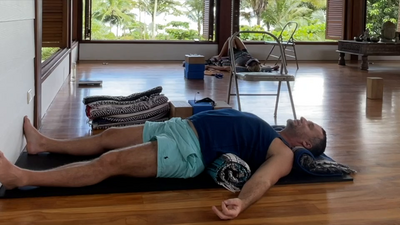- Meditation Practices
- Relaxation Practices
- 20-Minute Practices (Or Less)
- 30-Minute Practices (Or Less)
- 60-Minute Practices (Or More)
- Relaxation Yoga Classes
- Pain-Free Practices (+ Hacks)
- Beginner Yoga: 7-Part Series
- Posture Lab: How To
- Dharma Talks with Yogi Aaron
- Rocket Yoga
- Yoga Flow to Bring Power & Grace with Mimi Rieger
- 7-Day Pain-Free Journey
- Move Smarter With AYAMA™
- Hip Pain: 7-Day Series
- {FREE} Unlock Your Strength + Flexibility
- Neck Pain: 7-Day Series
- Back Pain: 7-Day Series
- Break Free from Pain - 7-Day Journey
- Foot Pain: 5-Day Series
- Hand + Wrist Pain: 5-Day Series
- The Stretching Police: Dismantling the Flexibility Myth
- Posture Lab (How To)
- Beginners To Yoga + AYAMA™
- Runners + Walkers (Muscle activation for)
- Chakra Healing Course
- Morning Routine Course
- Yoga Alignment Course
- Back Health Course To Eliminate Pain
- Yoga Nidra Course
- Handstand (How To)
- Access Personal Power (How To)
- The Energetics of Postures with Karina Mirsky
- Secret To Sequencing
- Stop Stretching Podcast Series
- Workshops
- {FREE} Empower Your Clients Series
- AYAMA Certification Course - Level One
- AYAMA Certification Course - Level Two
- AYAMA Certification Course - Level Three
- The AYAMA™ Online 200-Hour Yoga Teacher Training With Yogi Aaron
- How To Sell Out Your Yoga Retreats
- Business + Marketing Course For Yoga Teachers

Sleep Better! The Yoga Nidra Course
Yoga Nidra is a profound state of relaxation that transcends sleep. It's a powerful tool for analyzing desires, thoughts, and feelings, leading to greater self-awareness and inner peace. This revitalizing practice offers complete rest to the mind, brain, nervous system, senses, and body. After completing this class, you'll gain a deep understanding of Yoga Nidra, the science of sleep, and how to achieve optimal rest.
At The Yogi Club, we believe in the power of pain-free living. Find your happy place with our curriculum, tailored to boost your strength, stability, and flexibility—all while alleviating pain! From quick AYAMA sessions to in-depth training, we offer something for everyone. Start your free 15-day trial of The Yogi Club today to experience the transformative benefits of Applied Yoga Anatomy + Muscle Activation™ (AYAMA).
The following two lessons are specific practices that come from the Himalayan Tradition to help you prepare for the deep practices of Yoga Nidra.

















